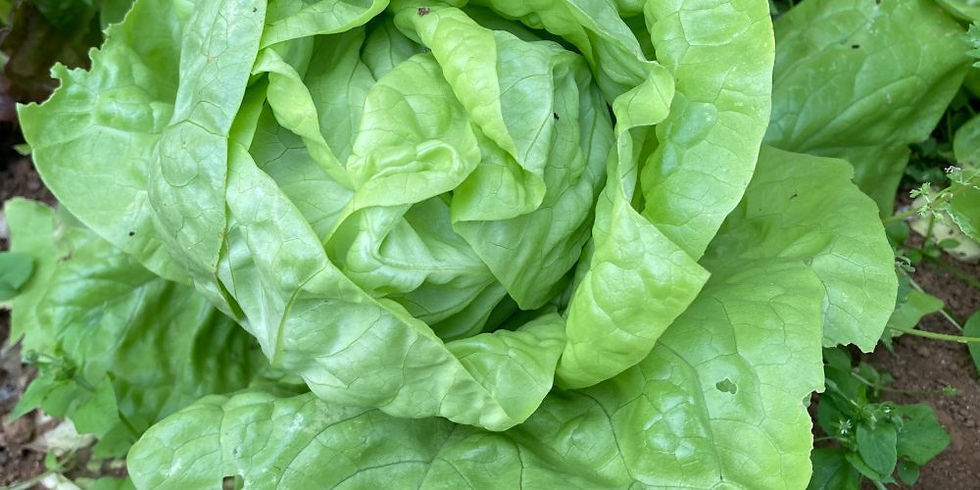What to plant in September….
- artvs3
- Sep 1, 2025
- 2 min read
Updated: Sep 2, 2025
Think lettuce is just a summer crop? Think again! September is actually a great time to plant certain types of lettuce—especially cold-hardy and winter-friendly varieties that will keep your salad bowl full well into autumn and even early spring.

Whether you're working with raised beds, a small garden, or just a few pots, lettuce is easy, low-maintenance, and rewarding. Lettuce might not seem exciting at first glance, but once you start growing your own—especially in the cooler months—you’ll realise how much better (and fresher) it tastes than anything from a plastic bag. With just a little effort, you can have crisp, vibrant leaves growing right through winter.

Lettuce loves a sunny or lightly shaded spot. You can grow it in the ground, pots, window boxes, or even a grow bag. Use light, well-drained compost or soil. If growing in containers, make sure they have good drainage. Either sow directly outside or start seeds indoors in modules and transplant later. Sow thinly, about 1cm deep.

Thin seedlings early to avoid overcrowding and poor airflow. Water consistently – lettuce likes moist (not waterlogged) soil. Protect young plants from slugs and snails using organic pellets, barriers, or beer traps. Use fleece or cloches to protect against frost as temperatures drop.
Some lettuce varieties to plant in September are:
1. Arctic King
Type: Butterhead
Why it’s great: This is a classic winter lettuce, bred to withstand frost and cold weather.
Planting tips: Sow in late August to mid-September, directly in the ground or in modules.
Care: Cover with fleece or a cold frame during harsh frosts.
Harvest: Late winter to early spring. Pick full heads or take outer leaves.

2. Winter Density
Type: Romaine/Cos
Why it’s great: Combines the crisp texture of romaine with the hardiness of a winter crop.
Planting tips: Sow in modules or directly in rows spaced 15–20cm apart.
Care: Keep soil moist, and cover if extreme frost is forecast.
Harvest: Mid to late winter, or earlier if you pick baby leaves.

3. Valdor
Type: Butterhead
Why it’s great: A compact, frost-tolerant variety that’s perfect for tighter spaces.
Planting tips: Sow in seed trays or directly where they’ll grow. Thin seedlings to 20cm apart.
Care: Protect young plants from slugs and pigeons!
Harvest: From January to March. Cut whole heads or harvest leaves as needed.

4. All Year Round
Type: Butterhead
Why it’s great: As the name suggests, it’s incredibly flexible and grows in cooler months too.
Planting tips: Sow indoors or under cover in September for autumn/winter crops.
Care: Keep watered but avoid soggy roots; good airflow helps prevent rot.
Harvest: Around 8–10 weeks after sowing. Best picked before hard frosts.

5. Rosetta (Red Oakleaf)
Type: Looseleaf
Why it’s great: Adds colour and crunch to salads, and it’s cut-and-come-again friendly.
Planting tips: Sow directly or in containers; space 10–15cm apart.
Care: Water regularly and harvest often to encourage new growth.
Harvest: Pick baby leaves in 4–5 weeks, or let it mature for full heads.

.png)



Comments